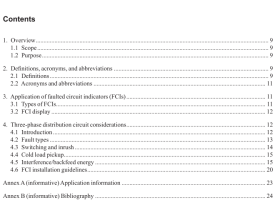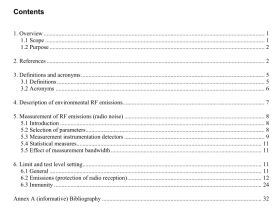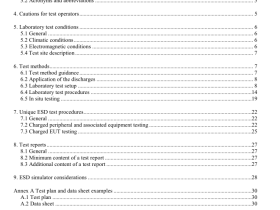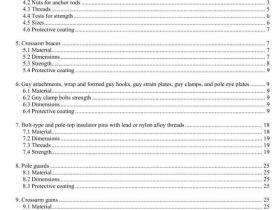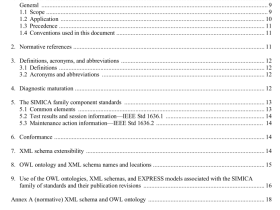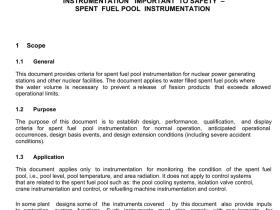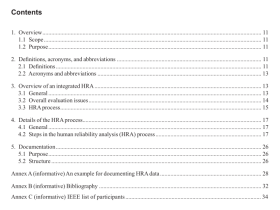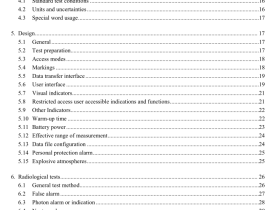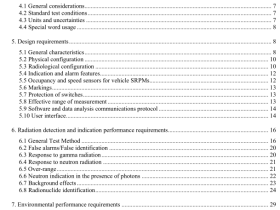IEEE Std 1673 pdf download
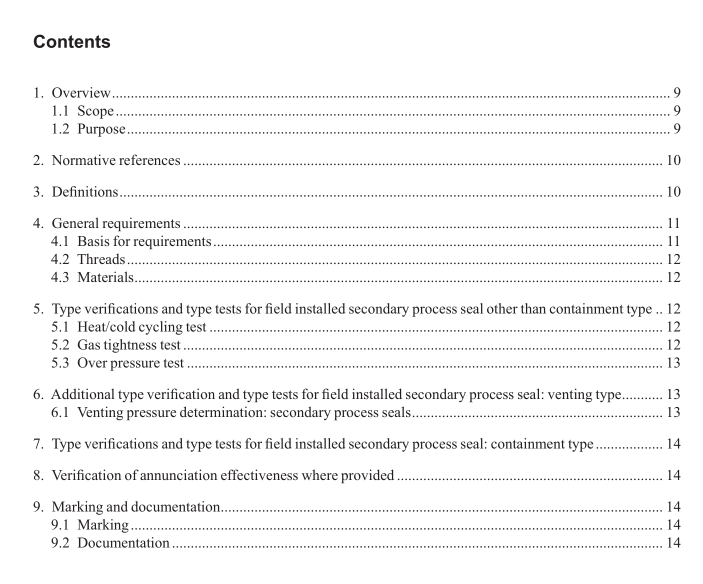
IEEE Std 1673 pdf download IEEE Standard for Requirements for Conduit and Cable Seals for Field Connected Wiring to Equipment in Petroleum and Chemical Industry Exposed to Pressures above Atmospheric (1.5 kPa, 0.22 psi)
1.Overview1.1 Scope
This document provides specific requirements for field installed sealing between a pressurized system (stream)containing flammable or combustible process fluids which is connected directly or indirectly to an electricalsystem where a failure could allow the migration of process fluids directly into the electrical system.
The basic requirements for electrical safety are not specifically addressed by this standard.The effects of theloss of containment of the process system in terms of risk to the environment and/or personnel health and safe-ty are also not addressed by this document.
1.2 Purpose
The purpose of this document is to provide construction and performance requirements for sealing devicesthat are designed to prevent flammable or combustible process fluids from entering the electrical wiring sys-tem and to prevent the propagation of an explosion through the cable or conduit system. While certain devices incorporate a primary seal in their design, a redundant sealing method or secondary seal as defined in NFPA70R NECN (501.17,505.26) and CSAR C22.1 (18-072) is required to provide a backup in the event of thefailure of the primary seal. These seals are intended for field installation by qualified individuals.
2. Normative references
The following referenced documents are indispensable for the application of this document(i.e., they mustbe understood and used, so each referenced document is cited in text and its relationship to this document isexplained).For dated references, only the edition cited applies.For undated references, the latest edition of thereferenced document (including any amendments or corrigenda) applies.
ANSI/ASME B1.20.1-1983(R2001), Pipe threads,general purpose (inch)’
ANSIISA 12.27.01,Requirements for Process Sealing Between Electrical Systems and Flammable or Com-bustible Process Fluids
ASME B31.3,ASME Code for Pressure Piping2CSA C22.1R,Canadian Electrical CodeR: Part 1′
CSA C22.2 No 18-M,Outlet Boxes,Conduit Boxes,and Fittings
CSA C22.2 No.30,Explosion-Proof Enclosures for Use in Class I Hazardous LocationsISO 965/1-1980,Metric Screw Threads*
ISO 965/3-1980,Metric Screw ThreadsNFPA 70R, National Electrical CodeR
UL 886, Standard for Safety for Outlet Boxes and Fittings for Use in Hazardous(Classified)Locations*
3. Definitions
For the purposes of this document, the following terms and definitions apply. The IEEEStandards DictionaryOnline should be consulted for terms not defined in this clause.6
cable seal: A seal that is installed at a cable termination to prevent the release of an explosion from an explo-sion-proof enclosure and that minimizes the passage of gases or vapors at atmospheric pressure.
NOTE—These devices only minimize the passage of gas, but are not designed or intended to prevent it.conduit seal: A seal that is installed in a conduit to prevent the passage of an explosion from one portion of theconduit system to another and that minimizes the passages of gases or vapors at atmospheric pressure.
NOTE—These devices only minimize the passage of gas but are not designed or intended to prevent it.
dual seal device: Equipment which incorporates, along any single potential leakage path, a primary processseal and one or more secondary process seals such that the failure of two or more independent seals is requiredto allow migration of process fluids from their designed containment into the external electrical system.
field installed secondary seal: A secondary seal intended to be installed between unspecified process con-nected equipment and the premises wiring system that will only come into contact with process fluids inexcess of pressures above 1.5 kilopascals (0.22 psi) in the event of the failure of a primary process seal. Thisincludes secondary process seals of the containment and venting types.
maximum allowable working pressure (MAWP):The pressure at which a device can be subjected to with-out exceeding the maximum allowable stress of the material.
primary process seal: A process seal that is directly in contact with process fluids under conditions of normaloperation.
process connected equipment: Electrical equipment that contains a process seal and is intended for comne-tion to an external system that contains process fluids.
process fluid: A liquid or vapor that is used in, or is a byproduct of, an industrial process.
process seal: A device to prevent the migration of process fluids from the designed containment into the exter-nal electrical system.
secondary process seal—containment type: A seal that will only come into contact with process fluids in ex-cess of pressures above 1.5 kilopascals(0.22 psi) only in the event of the failure of a primary process seal. Thistype of device is designed to contain the process pressure at a predetermined level and may provide a means ofsignaling that containment by the primary seal has been lost. Containment type means the seal must hold thepressure in the enclosure (materials cannot be released to the atmosphere) and may allow for an indication theprimary seal has failed.
secondary process seal—venting type: A seal that will only come into contact with process fluids in excess ofpressures above 1.5 kilopascals(0.22 psi) only in the event of the failure of a primary process seal. This type ofdevice is not designed to contain the pressure of the process system. This device will vent the pressure and mayprovide a means of signaling that containment by the primary seal has been lost.”Venting” meaning the seal isintended to be connected to a box that fails below the maximum allowable working pressure (MAWP) of theseal, thereby relieving the pressure.
single seal device: A device that incorporates, along any single potential leakage path, a single sealing struc-ture such that a failure of the seal may result in the migration of process fluids from their designed containmentinto the external electrical system.
